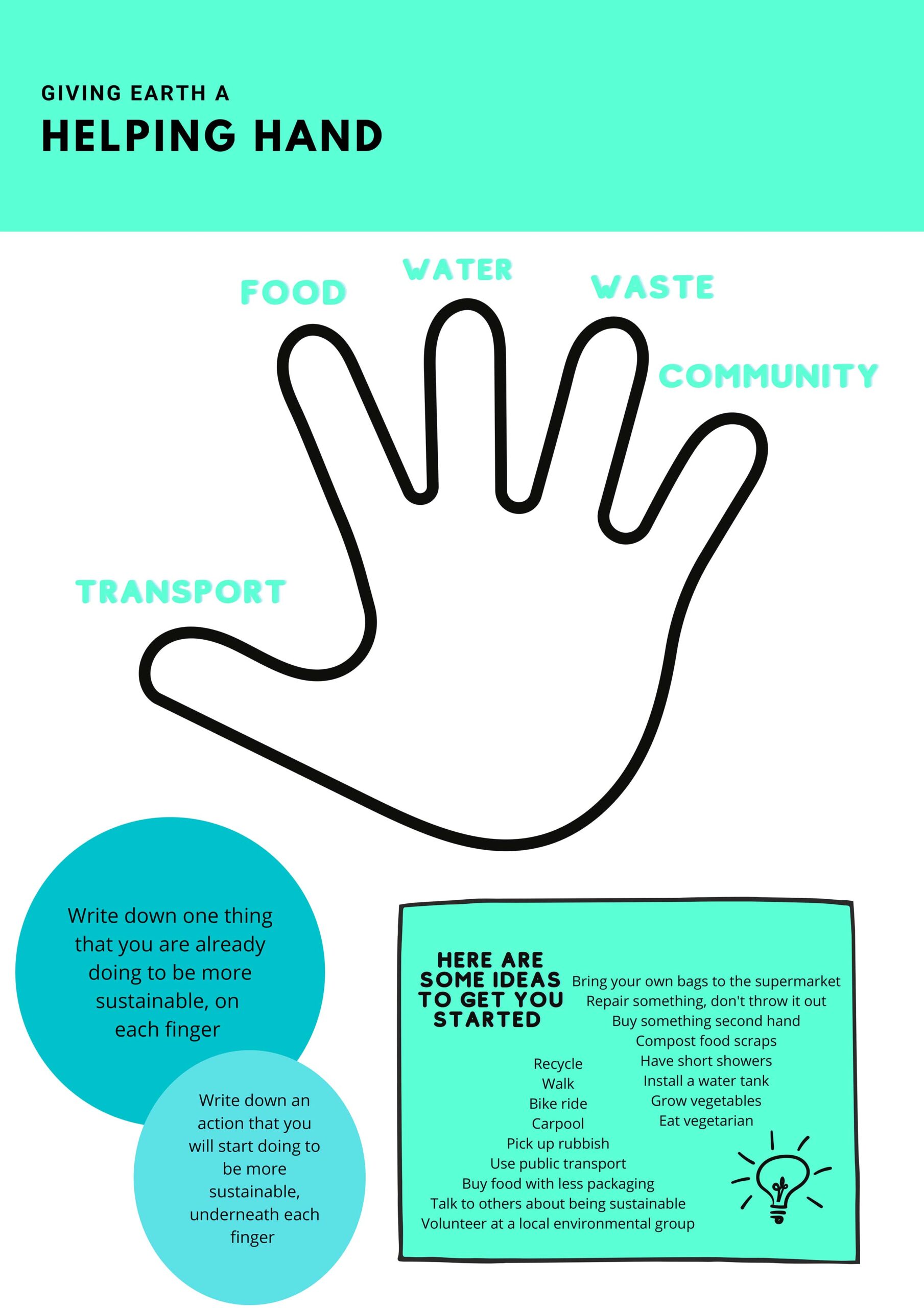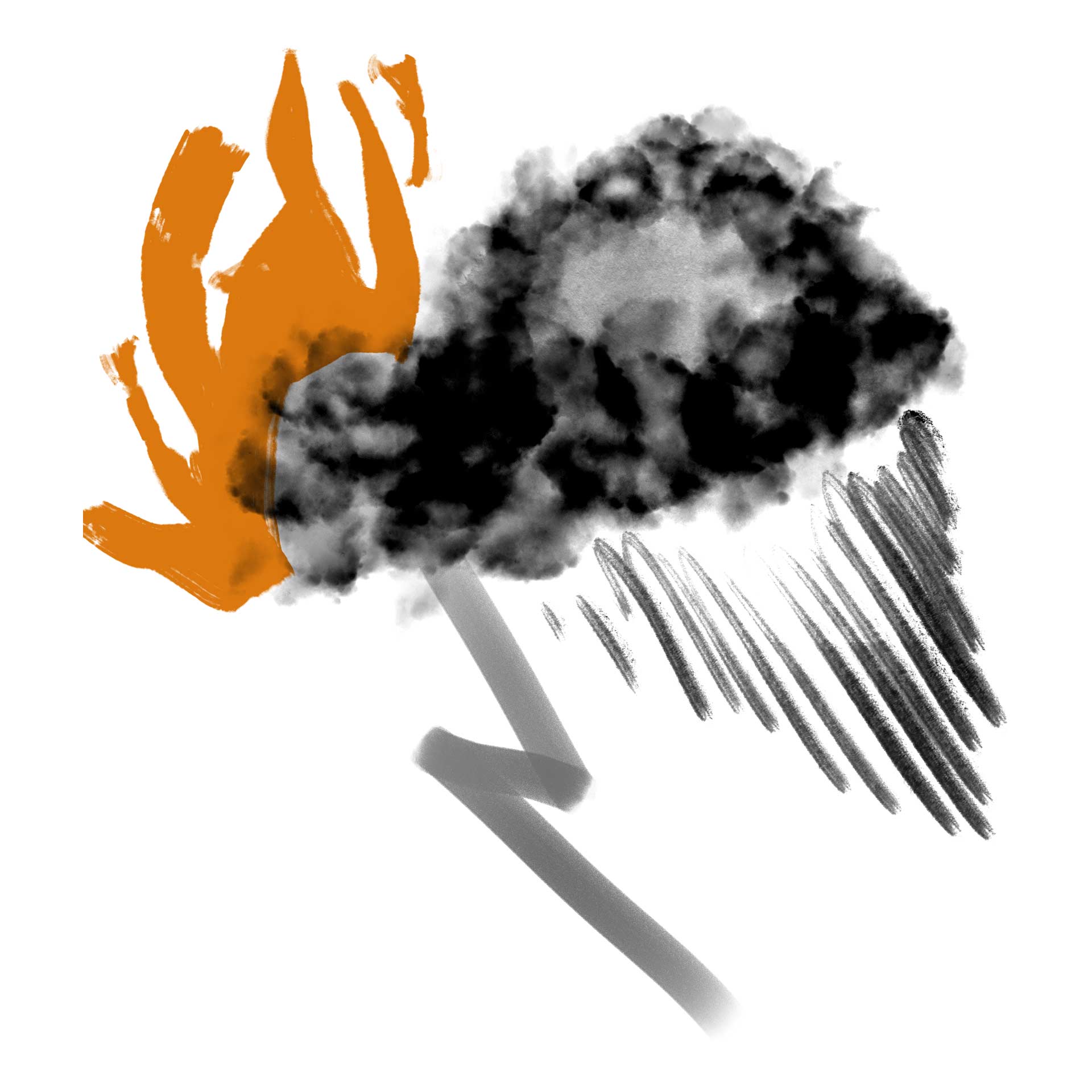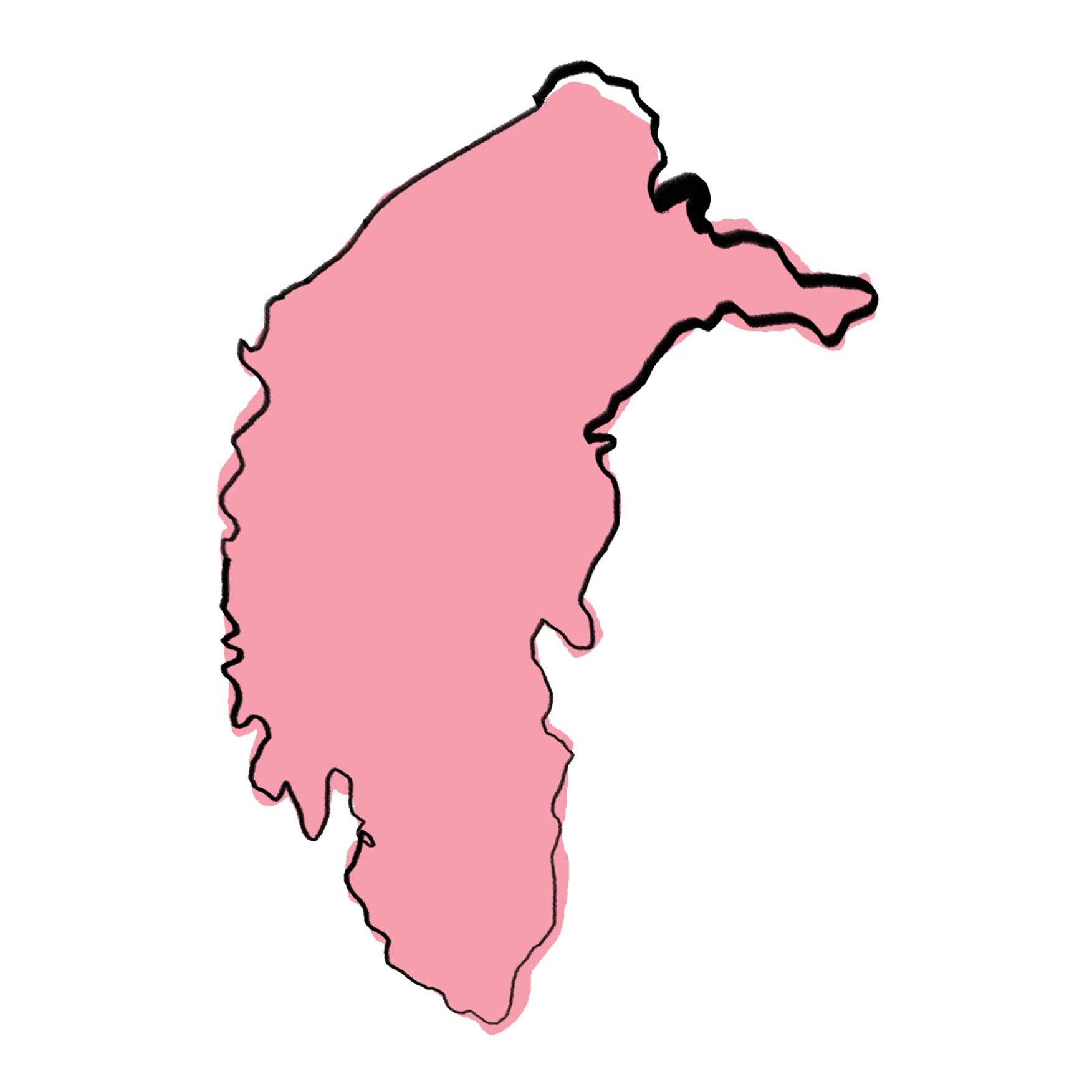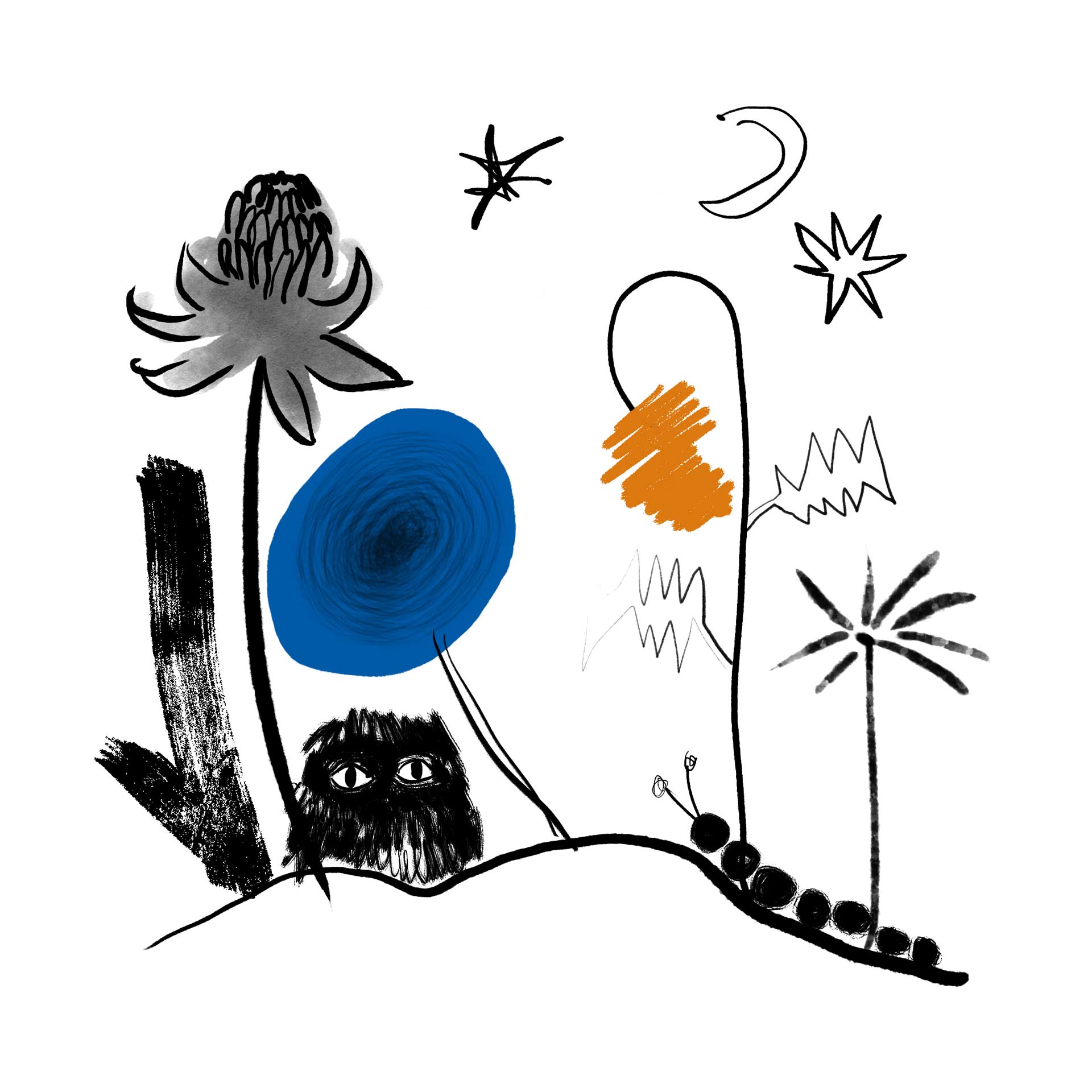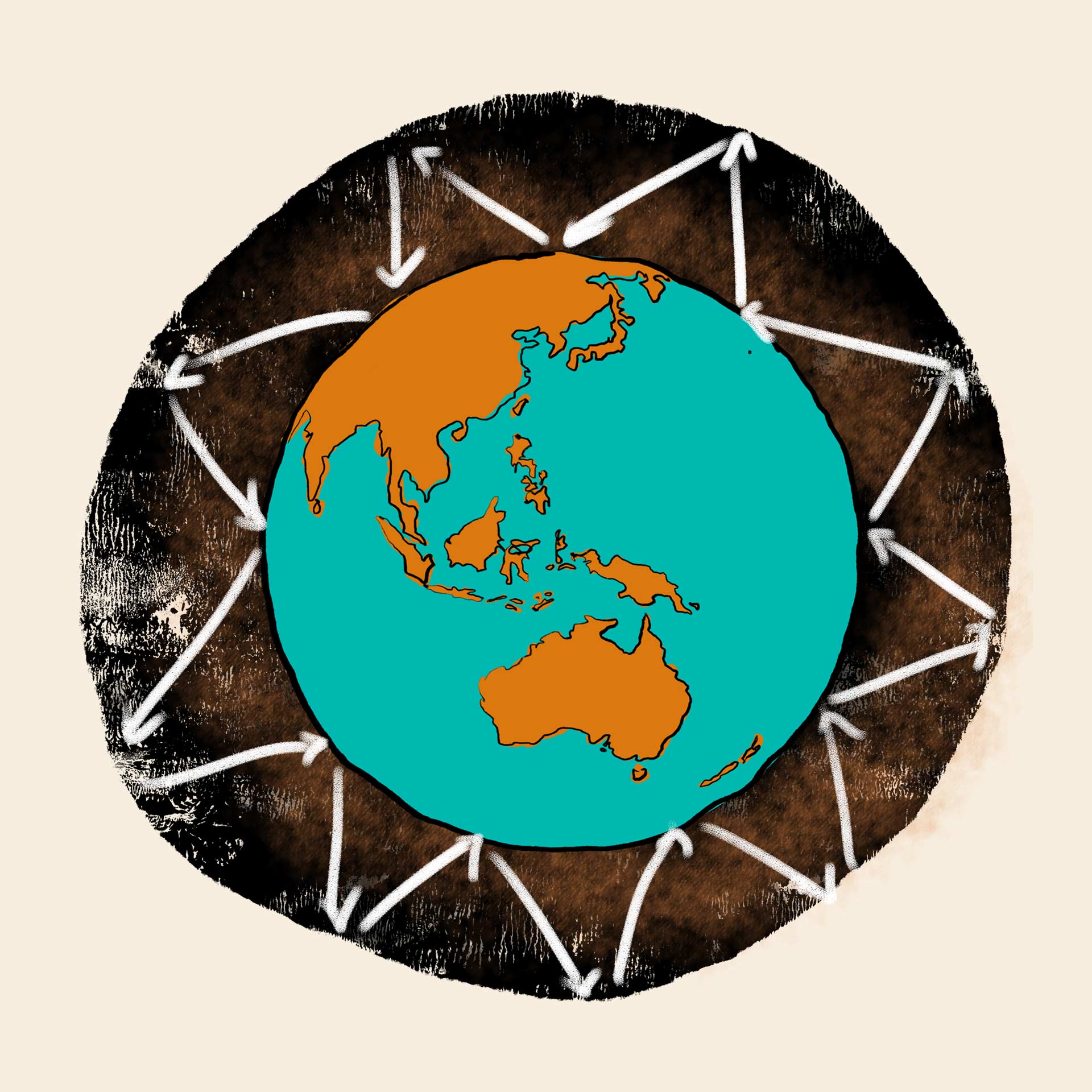Let’s find out more about climate change in the ACT
Click the links below to discover more!
What is climate change?
Climate change is a change in the expected, or average, conditions for a particular region over a long period of time. We can see these changes in things such as increasing temperatures and decreases in rain.
Scientists measure climateThe usual weather that happens in an area over a long time, usually many years. Climate change is when this usual weather changes. change by looking at what the average measurements of things such as temperature and rainfall were years ago. Then they look at what these are now, and what they are expected to be, tens of years or even hundreds of years into the future.
When the climateThe usual weather that happens in an area over a long time, usually many years. Climate change is when this usual weather changes. of an area changes, we can still experience the weatherThe sun, rain, or wind that you experience every day. we are used to. For example, the ACT’s mountains may still have cold, windy and snowy days over winter. But over many years, as climateThe usual weather that happens in an area over a long time, usually many years. Climate change is when this usual weather changes. changes, we will experience different weatherThe sun, rain, or wind that you experience every day.. The mountains may start to have more warm days and less snow; days in the city may become uncomfortably hot with more dangerous storms.
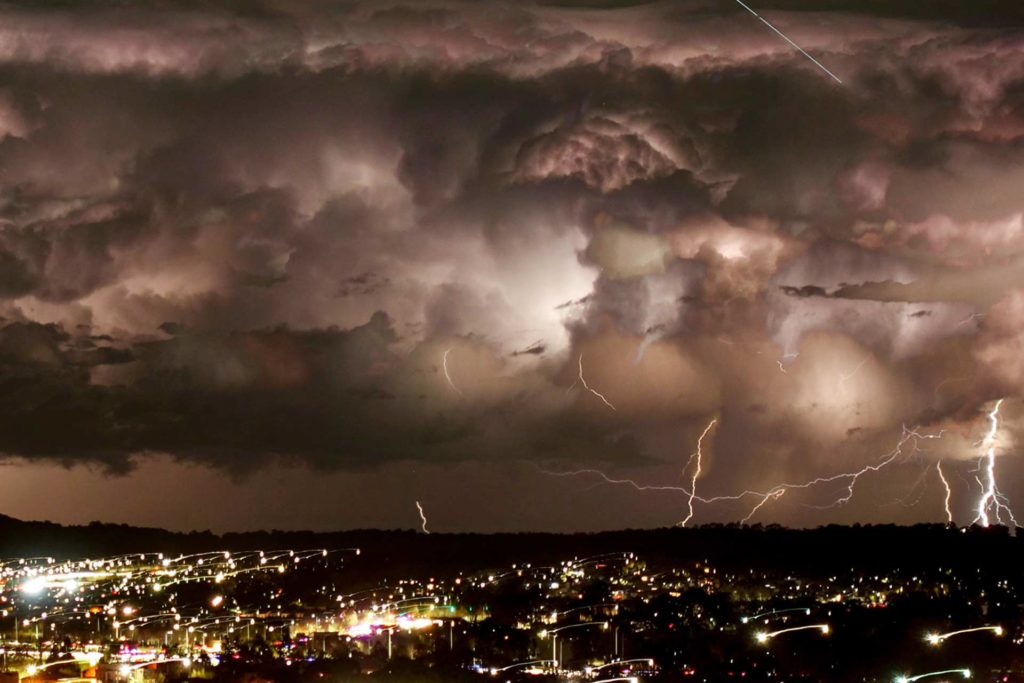
What is the difference between weather and climate?
weatherThe sun, rain, or wind that you experience every day. describes the sun, rain, or wind that you experience every day. weatherThe sun, rain, or wind that you experience every day. can change a lot very quickly – over days, hours and even minutes! weatherThe sun, rain, or wind that you experience every day. also changes between different places, even within the ACT. climateThe usual weather that happens in an area over a long time, usually many years. Climate change is when this usual weather changes. is the usual weatherThe sun, rain, or wind that you experience every day. that happens in an area over a long time, usually many years. For example, a place that mostly has hot and humid weatherThe sun, rain, or wind that you experience every day. has a ‘tropical climate’. But an area that has few rainy days and many days of hot, dry weatherThe sun, rain, or wind that you experience every day. has a ‘desert climate’.
Image: Storm over Canberra, Photo: Mark Jekabsons
What causes climate to change?
There are many natural reasons (things that aren’t caused by human activities) why climate changes. The climate can become warmer, colder, wetter or drier because of changes in:
- solar radiation – the heat and energy that comes from the Sun.
- ocean currents – where seawater moves continuously in a particular direction bringing warmer or colder water.
- the amount of greenhouse gasesA gas in the atmosphere (such as carbon dioxide, methane and nitrous oxide) that absorbs and emits energy, warming the Earth. Greenhouse gas emissions from human activities are the main cause of climate change. such as carbon dioxide in the atmosphere – the more of these gases, the warmer the climateThe usual weather that happens in an area over a long time, usually many years. Climate change is when this usual weather changes..
- large volcanic eruptions – ash and dust from volcanic eruptions go into the atmosphere and block out the sun causing cooler temperatures.
This means that the climateThe usual weather that happens in an area over a long time, usually many years. Climate change is when this usual weather changes. of different areas across the world is expected to change over time. But today, the speed and severity of climateThe usual weather that happens in an area over a long time, usually many years. Climate change is when this usual weather changes. change in many areas is far greater than what would be likely under natural conditions alone.
The Earth’s climateThe usual weather that happens in an area over a long time, usually many years. Climate change is when this usual weather changes. has been changing so much in recent years because of human activities that release more and more greenhouse gasesA gas in the atmosphere (such as carbon dioxide, methane and nitrous oxide) that absorbs and emits energy, warming the Earth. Greenhouse gas emissions from human activities are the main cause of climate change. – more than there would be naturally on Earth. greenhouse gasesA gas in the atmosphere (such as carbon dioxide, methane and nitrous oxide) that absorbs and emits energy, warming the Earth. Greenhouse gas emissions from human activities are the main cause of climate change. are produced from fossil fuels such as coal, gas and petrol. Across the world, fossil fuels are used every day as fuel for cars and other transport, and as energy for electricity and manufacturing. greenhouse gasesA gas in the atmosphere (such as carbon dioxide, methane and nitrous oxide) that absorbs and emits energy, warming the Earth. Greenhouse gas emissions from human activities are the main cause of climate change. are also released when trees and other vegetation are cleared to build more houses or farms.
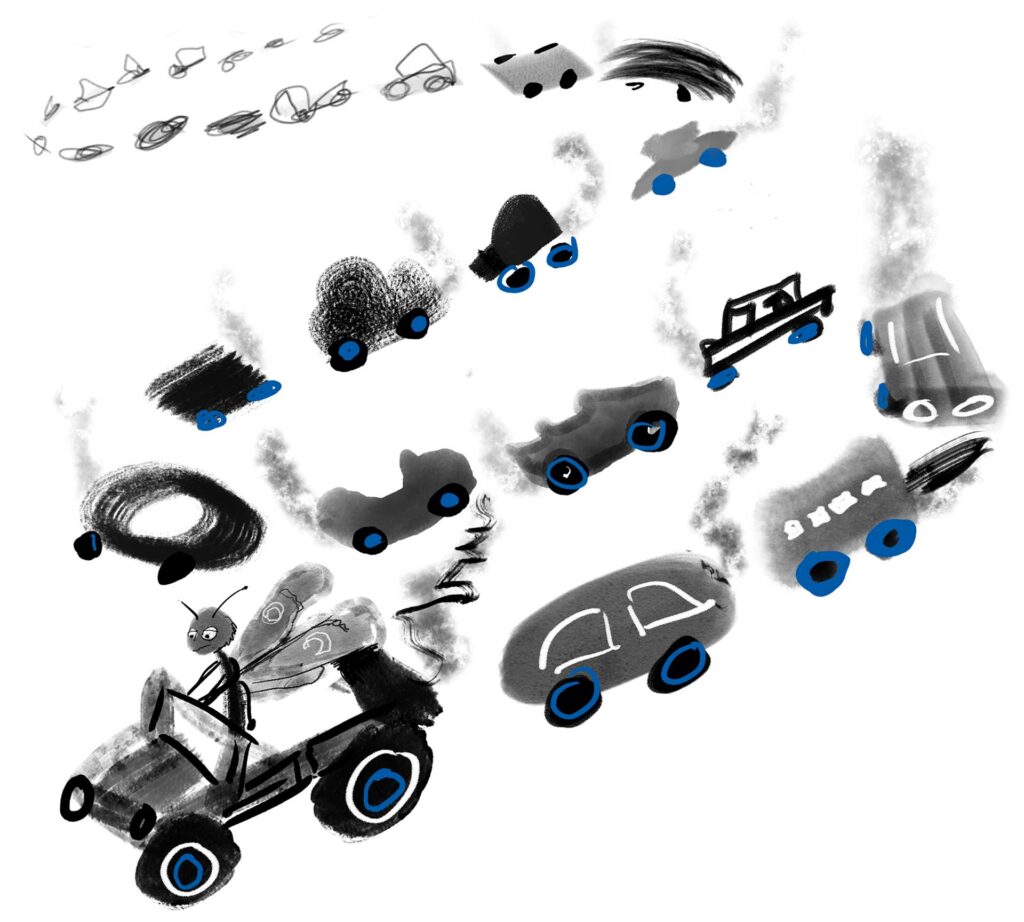
Greenhouse gases and climate change
greenhouse gasesA gas in the atmosphere (such as carbon dioxide, methane and nitrous oxide) that absorbs and emits energy, warming the Earth. Greenhouse gas emissions from human activities are the main cause of climate change., such as carbon dioxide and methane, are necessary for life on Earth. They keep warmth in our atmosphere so that plants and animals can survive. But if the amount of greenhouse gasesA gas in the atmosphere (such as carbon dioxide, methane and nitrous oxide) that absorbs and emits energy, warming the Earth. Greenhouse gas emissions from human activities are the main cause of climate change. in the atmosphere increases too much, the Earth’s climateThe usual weather that happens in an area over a long time, usually many years. Climate change is when this usual weather changes. changes. This is because greenhouse gasesA gas in the atmosphere (such as carbon dioxide, methane and nitrous oxide) that absorbs and emits energy, warming the Earth. Greenhouse gas emissions from human activities are the main cause of climate change. absorb heat energy from the Sun and stop this heat from being released back into space. This causes the Earth to have more hot days, less rainfall, and more frequent and bigger storms.
All greenhouse gasesA gas in the atmosphere (such as carbon dioxide, methane and nitrous oxide) that absorbs and emits energy, warming the Earth. Greenhouse gas emissions from human activities are the main cause of climate change. (it doesn’t matter where they come from) contribute to climateThe usual weather that happens in an area over a long time, usually many years. Climate change is when this usual weather changes. change. This means that greenhouse gasA gas in the atmosphere (such as carbon dioxide, methane and nitrous oxide) that absorbs and emits energy, warming the Earth. Greenhouse gas emissions from human activities are the main cause of climate change. emissions from Canberra have an impact on the global environment, not just the local region.
How is our climate changing?
Across the world, temperatures are increasing, bushfires are getting worse, and there are more floods and storms. In some areas, rainfall is also decreasing. These changes are all a result of climate change, caused by increases in greenhouse gases from human activities.
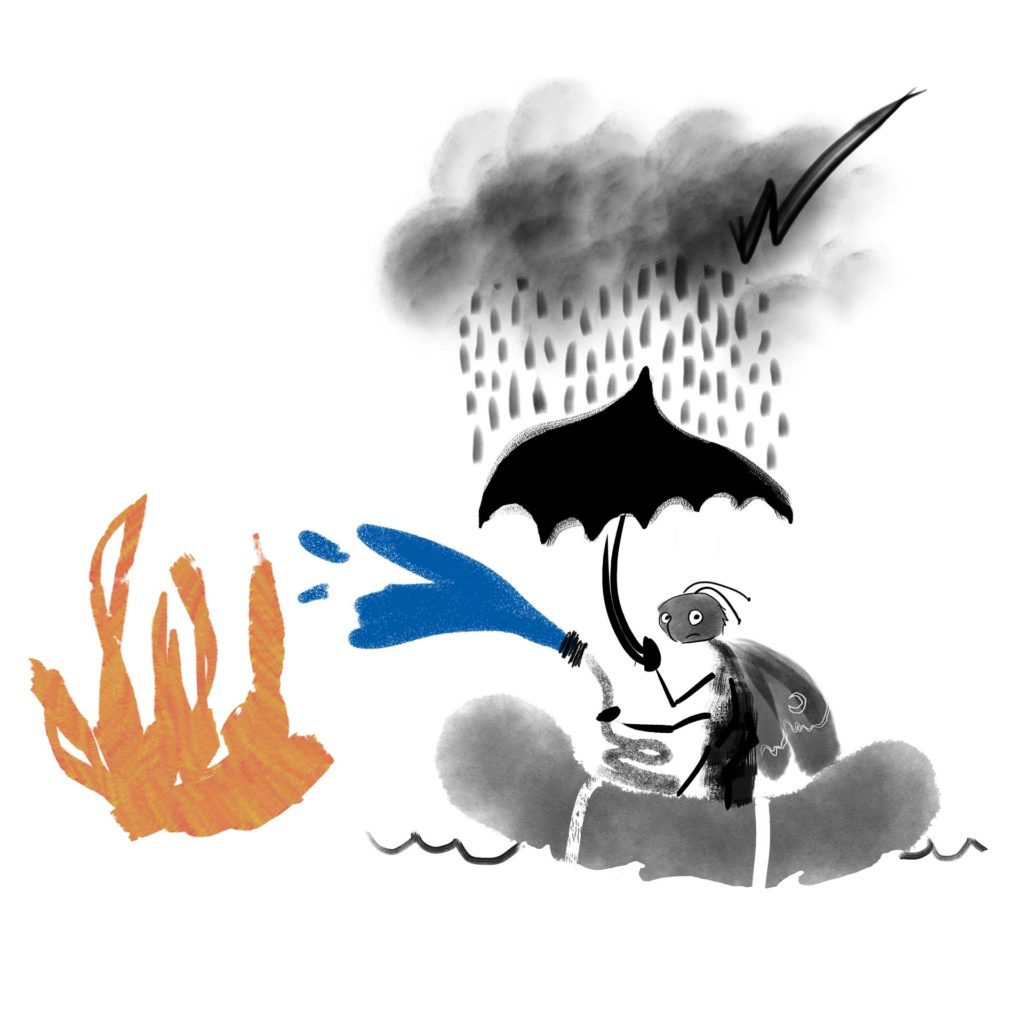
How is climate change affecting the ACT?
- Temperatures are increasing (days and nights are becoming warmer).
- Extremely hot days are getting even hotter! Canberra now has some summer days above 40 degrees, and the number of hot days has doubled since 1950.
- Hotter and drier weatherThe sun, rain, or wind that you experience every day. has increased the risk of bushfiresA fire that burns in grass, bush or woodland and can threaten life, property and the environment in the ACT and NSW.
- There is less rainfall than there used to be, especially during spring and winter (which is when our dams normally get the most rain!).
- Trees are dying from lack of water and heat stress, especially in the city areas.
- Hotter and drier weatherThe sun, rain, or wind that you experience every day. has increased the amount of bare ground (areas without grass and other vegetation) in the ACT and NSW. This has led to more dust storms on windy days which can cause poor air quality in Canberra.
- Algal blooms are more common, making places such as lakes unsafe to play in.
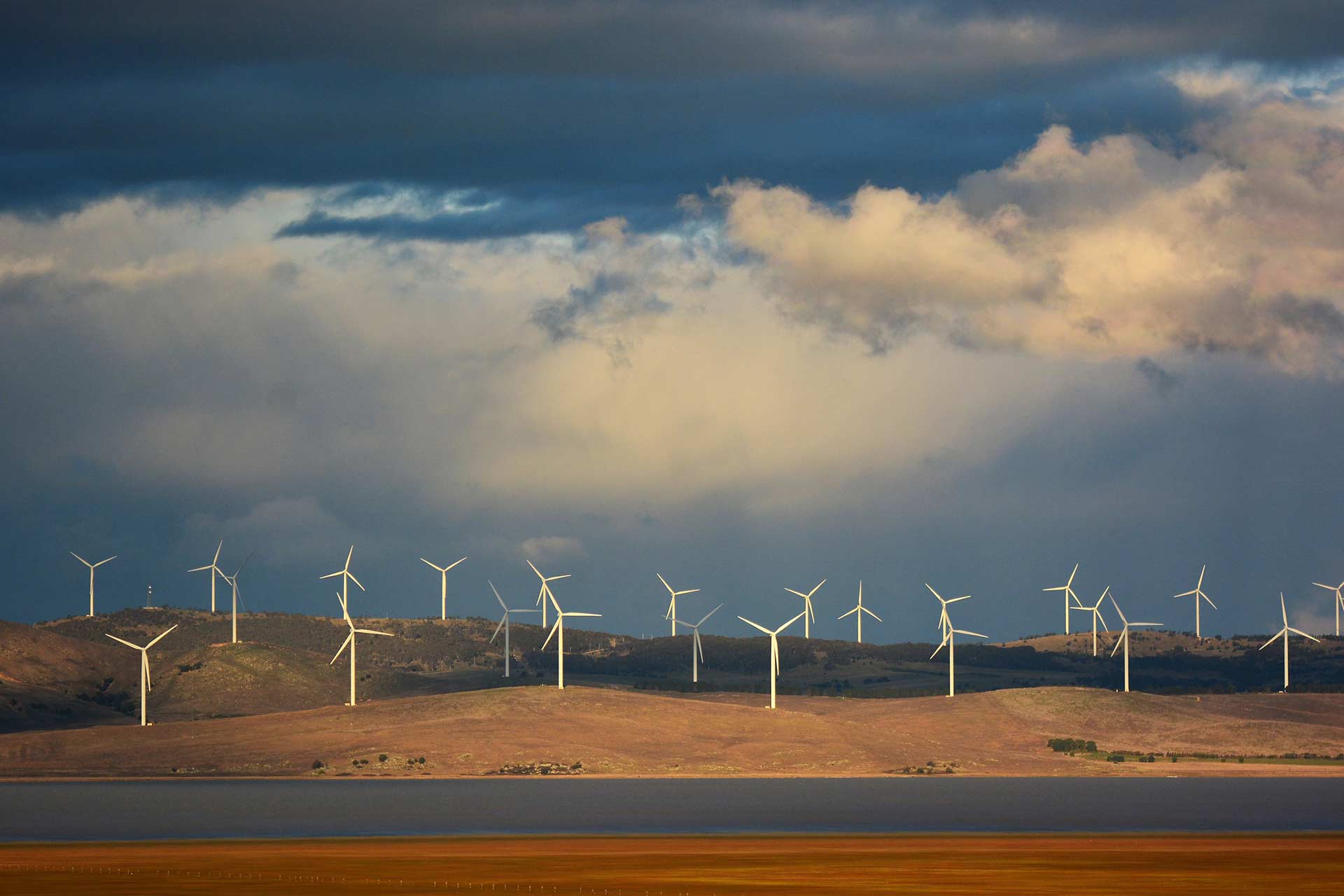
Did you know?
All of the ACT’s electricity comes from renewable energy making us the first state or territory in Australia to do this! Most of our electricity comes from wind farms, but we also get energy from solar farms and from the solar panels we put on our home rooftops.
Even though our electricity is from renewable sources, it is still important to reduce our energy use, otherwise we will need to produce more and more energy in the future.
Image: WindFarm, Photo by Mark Jekabsons
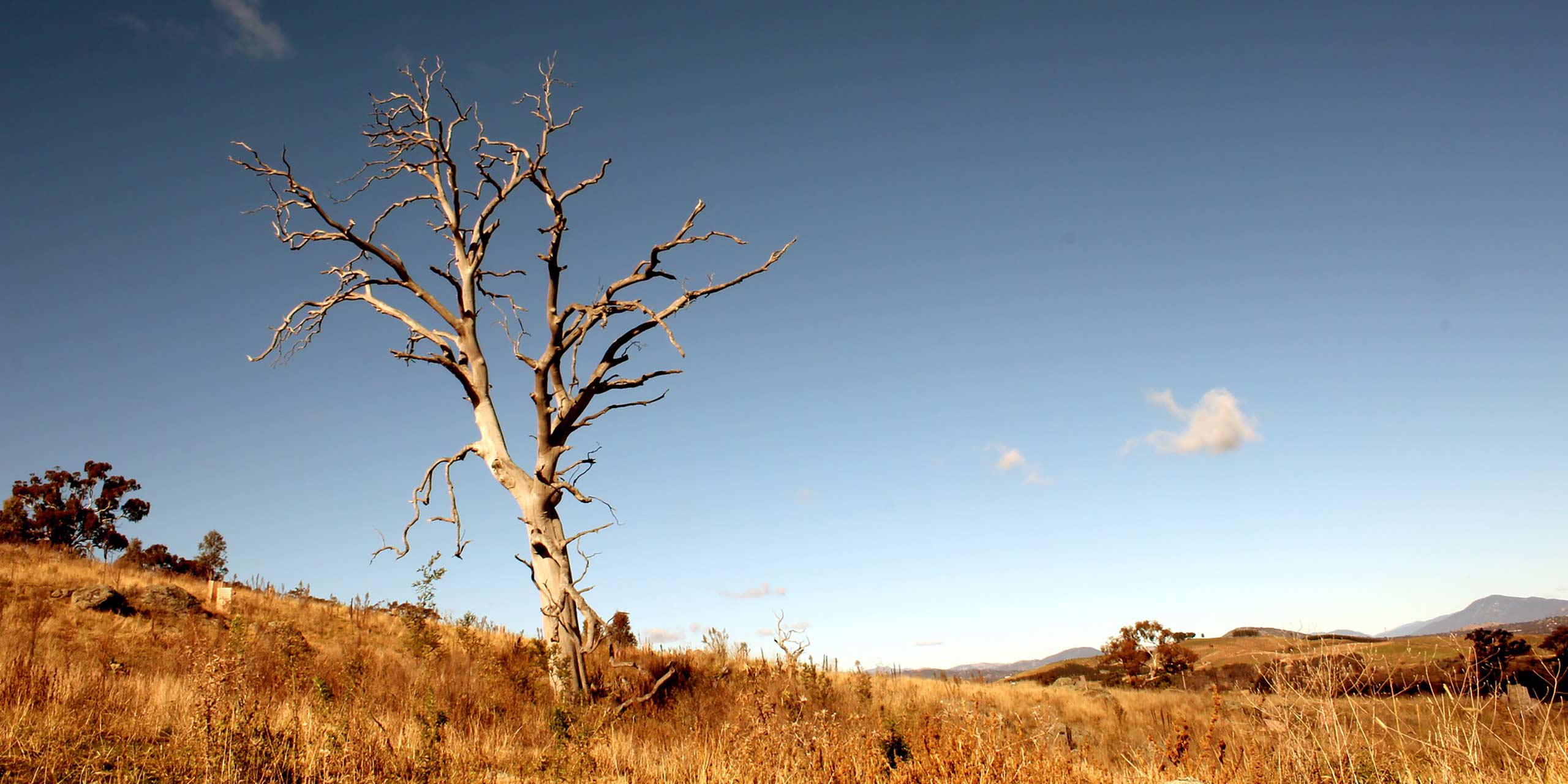
What can we all do to help reduce climate change?
The climate is changing in Canberra and all around the world. But if we all work together, we can stop our planet warming too much. Every reduction in greenhouse gases, no matter how small, can help.
Things you can do
- Encourage your family to drive less (using less fuel means you are reducing the greenhouse gasesA gas in the atmosphere (such as carbon dioxide, methane and nitrous oxide) that absorbs and emits energy, warming the Earth. Greenhouse gas emissions from human activities are the main cause of climate change. produced). You can walk, ride a bike, catch public transport or get a lift with others.
- Create less waste. Don’t buy food in packages. Buy local foods and use everything you buy.
- Recycle your waste, such as plastics, cardboard and paper.
- Compost your food scraps.
- Use environmentally friendly cleaning products.
- Plant more trees (join a local tree-planting group).
- Use less power (turn off the lights and heater or air-con when you don’t need them).
- Use less water (have shorter showers).
- Buy second-hand clothing and other items.
- Talk to your family about installing solar panels.
- Teach people how to reduce their greenhouse gasA gas in the atmosphere (such as carbon dioxide, methane and nitrous oxide) that absorbs and emits energy, warming the Earth. Greenhouse gas emissions from human activities are the main cause of climate change. emissions and adapt to climateThe usual weather that happens in an area over a long time, usually many years. Climate change is when this usual weather changes. change.
- Grow more trees, especially in the city.
- Buy electric vehicles rather than petrol and diesel ones.
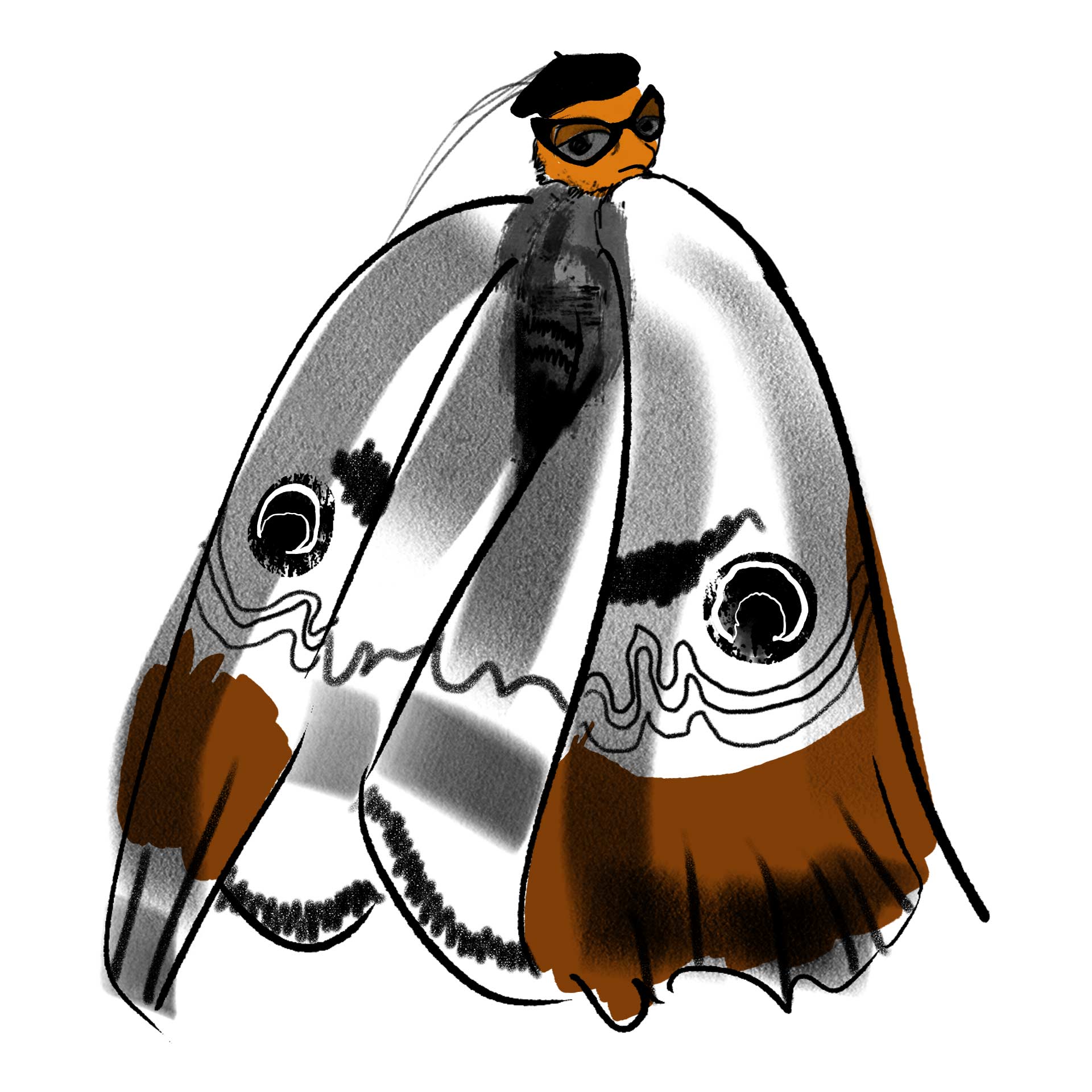
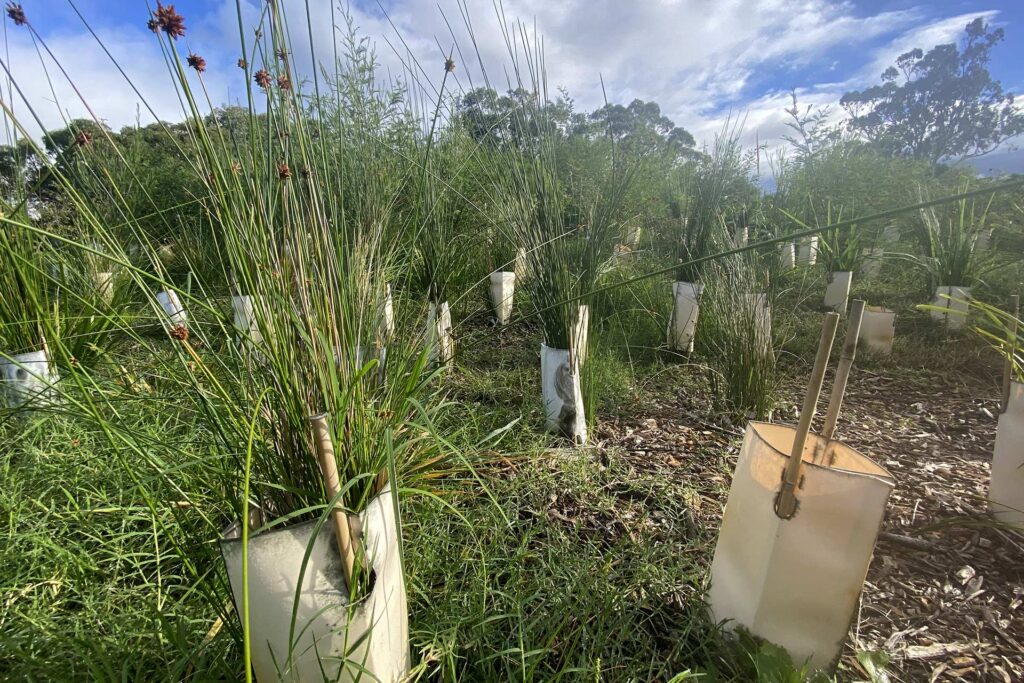
LET’S GET OUTSIDE
Visit the Microforest in Downer to see ways that communities can help combat climateThe usual weather that happens in an area over a long time, usually many years. Climate change is when this usual weather changes. change. The Climate Factory and local volunteers are in the process of building another one in Watson, Holt and Lyneham. You can help plant, or try and start one in your own suburb!’
Image: Downer Micro-forest
Activities
Weather and climate
Scientists love information! Accurate, carefully measured information helps scientists learn new things about the world.
You can be a scientist too! Set up a thermometer at school or at home (the thermometer must be outside) to measure the temperature.
Choose a time of day (maybe 2:30pm if at school, or 4pm at home) to measure the temperature. Measure the temperature every day for a whole month at this same time. Record the date, time and temperature on your computer. At the end of the month have a look to see how many days of the same (or similar) temperature you had.
Scientists do measurements of the weatherThe sun, rain, or wind that you experience every day. like this, too. But they do it over many, many years, not months. Many years of weatherThe sun, rain, or wind that you experience every day. data tell scientists what is happening with the climateThe usual weather that happens in an area over a long time, usually many years. Climate change is when this usual weather changes..
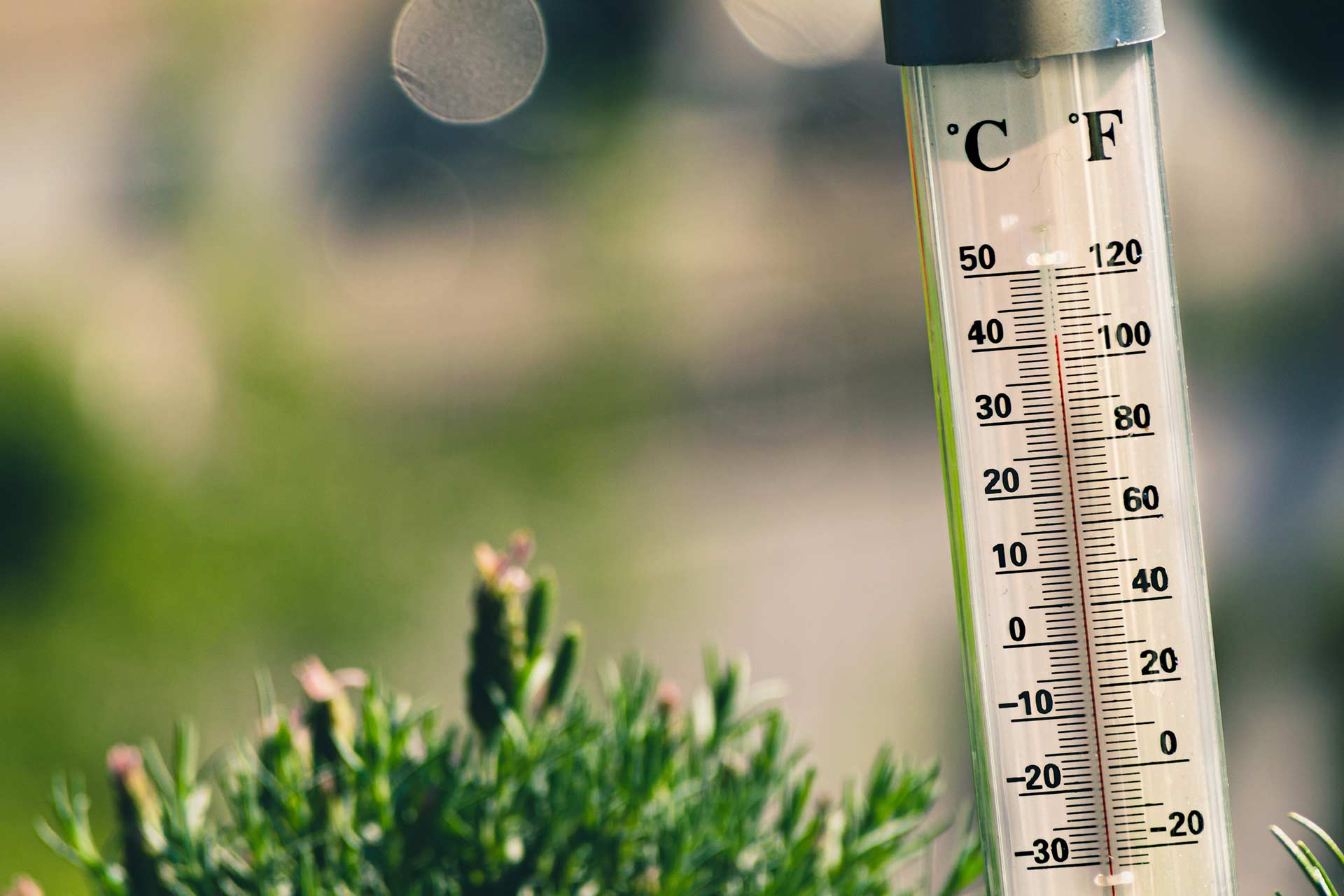
A glass of sea-level rise
This activity shows us how melting ice contributes to sea level rise.
The world’s sea level (or height of the Earth’s seas and oceans) has risen by about 20 cm in the past 100 years. It continues to rise, and has been rising even faster in recent years. This may make living by the coast and on small islands impossible in the future.
Global warming and melting ice cause the sea level to rise. But what type of ice? Is it the ice from mountains and on land, or the ice from icebergs floating in the sea?
Let’s find out. Adult assistance required.
Experiment 1: Investigate whether icebergs contribute to sea-level rise
WHAT DO I NEED?
- Bowl
- Ice cubes
- Pen
To get an idea of the effect of melting ice on the rise in sea level, add water to a bowl until it is about a half full (if you don’t have a bowl, you can use a glass). Then add 10 ice cubes, or just enough to make the water rise nearly to the top of the bowl (try not to spill any water – it might be a good idea to do this in the sink).
Take a note of where the water level is (you can mark the bowl with a pen) then leave the bowl of water and ice until all the ice is melted.
Did the melting ice cause the water level to rise? Or did it stay the same?
Experiment 2: Does melting ice on land make the sea level rise?
WHAT DO I NEED?
- Bowl
- Mug
- Ice cubes or ice block
- Pen
Place a mug upside down into a bowl. Using the pen, draw a line about hallway up the inside of the bowl. Fill the tray with water until it reaches the line you have drawn. Balance around 10 (or as many as you can) ice cubes on the top of the upturned mug. You can also use one larger piece of ice that can be balanced on the mug.
Check back on the experiment once the ice has melted. What happened to the height of the water in the bowl? Is the water level now higher or lower than the line you drew on the bowl?
What has happened?
In experiment 1, the water level should have stayed the same, so the water shouldn’t have overflowed. When ice in water melts, it just changes form – from solid water to liquid water – but there’s still the same amount of water in the bowl.
In experiment 2, the water level should have risen higher than your mark on the bowl. This is because the melted ice has increased the amount of water in the bowl.
Frozen water that floats, such as icebergs in the polar regions, would not change sea level if it were to melt. But the ice sheets of Antarctica and Greenland contain huge amounts of frozen water, most of which is on land. So, if that ice on land melted it would run into the oceans, raising sea level across the globe.
Sea level is also rising as our oceans get warmer, because water expands as it warms.
Climate change words
This activity improves our general knowledge about climate change. See if you know the answer to the questions. Hint, some of the answers are on this website! Others, you may need to search online. Once you think you know the answer, click on the card to see if you are right.
What is the energy that comes from the Sun, we see it every day as sunlight
Solar radiation
Name a greenhouse gas that warms the Earth
Carbon dioxide, methane
Name a fossil fuel
Petrol, gas, coal
Name a type of renewable energy that doesn’t produce greenhouse gases
Solar power and wind energy
What do we call the sun, rain, and wind that you experience every day and changes in these over hours or days
Weather
What do we call the temperature and rainfall in an area over a long time?
Climate
Giving Earth a helping hand
This activity lets us explore the actions we can take to reduce climate change.
WHAT DO I NEED?
Print out the Helping Hand picture below, or make your own! For each of the fingers, come up with one action that you already do to improve sustainability. Then write down an action that you will start doing to be even more sustainable.
